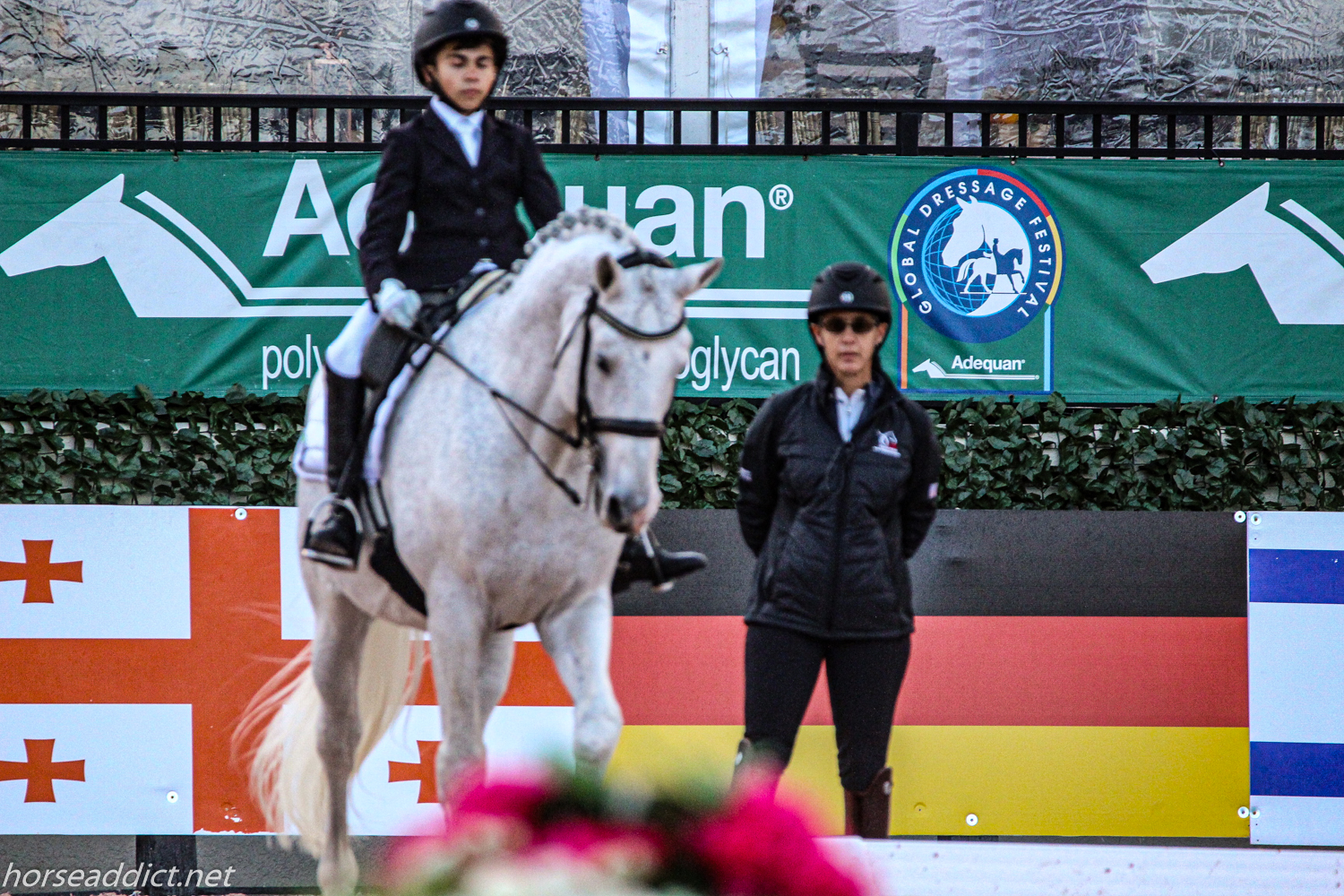“These horses have a heightened sense of awareness.They are very compassionate.” JP Hourdebaigt.
I had the opportunity to speak with J.P. Hourdebaigt at the recent CPEDI (Concours Para Equestrian Dressage International) JP is the massage therapist for the Para horses who are ridden by the para riders for the US Team. He spoke about the qualities these horses possess.
“They have two levels. First they receive information from the trainer and then second, they duplicate the training with the para rider regardless of how the para rider is compensating for their disability. These horses must be fit and ridden by the trainer and when they work with the para rider they understand they have to help. For example the horse ridden by Roxy Trunnell is a very flamboyant and hot horse but with Roxy he is quiet and he is her guardian. He says “don’t mess with my rider”. Lord Loxley , ridden by David Botano is the same. This horse is trained to Grand Prix and is a stallion but with David he is quiet and aware of his para rider. Selecting a horse for a para rider you have to be looking for those qualities. Not every horse will be suitable.”

How did you start with equine massage?
“I was born in France and as an adult moved to Canada. I did human massage for 20 years and worked with many Canadian sport teams through Sport Canada. I was myself just a trail rider . But then later when I had more time I started to ride more. I leased a horse and at the barn I used some of my massage techniques on some of the horses with good results. Then more people began to ask for my help with their horses. I then did a one day clinic that was very successful. This was in the early 90s and I realized there was a niche market as no one was doing this work on horses. I spent the next four to five years learning about horse anatomy and learning from veterinarians. I wrote a book “Equine Massage a Practical Guide”. It has been translated into 8 languages!”

How did you start working with the US Para Team?
“ Ellie Brimmer, a para equestrian, asked me if I could help and I was happy to do so. Then I was asked to help with the team for the 2018 World Equestrian Para Games I was able to ease the compensation in the horses who are compensating for their riders. That Games we got 3 bronze medals and a silver medal. I have been working with the US Para Team since then.”

Are there particular challenges you have in dealing with para horses?
“I wouldn’t say “challenges” as that sounds a bit negative.What I have to work out is where the horse needs help.Is it the work that is creating stress or tension? Or is it stress or tension created by the way the rider has to compensate for their disability or handicap? Each para rider has a different seat.One rider may sit more on the right side and that stresses the horse and can cause tension. So the “challenge” is for me to understand how the horse is stressing. I talk with the trainer to make sure that the saddle, the shoeing, the bit etc. are all ok for the horse. I also work with the trainer to assess how the para is riding and if there is a weakness then I work with the physio to help the rider to improve as much as possible to relieve that weakness to help the horse.”

What are you involved with during a competition like this CPEDI?
“I will work with the horse before or after the ride. Some horses like to have work done on them before they are ridden. It helps them. Others do not like it and are better after the ride. I always like to do stretches and release the fascia. That is important as if that is not released then it can spread to the muscle and create tension in the muscle.”
What is your schedule leading up to the Paralympics Tokyo 2020?
“We will be in Florida for the winter and there is one more CPEDI after this one. I see the horses every two weeks during this time. In June there is a one week training camp at Tryon and the team selection takes place then. June 19 the Team will be announced. Early August we have a training camp in Pennsylvania. The horses will be in quarantine then and on the 19th or 20th of August they will fly from New York to Tokyo. September 3 we will all be home again.“
I thanked JP for taking the time to speak with me and then I went to watch the Grade 1 riders compete. Para dressage has five levels with 1 being for those with the most severe disabilities. These riders do all of their tests with the horse at the walk. As the levels get higher the riders will walk and trot and finally walk , trot and canter. I was amazed by the Grade 1 riders. Courage, Determination. Resilience. They are inspirational.





Leave a Reply